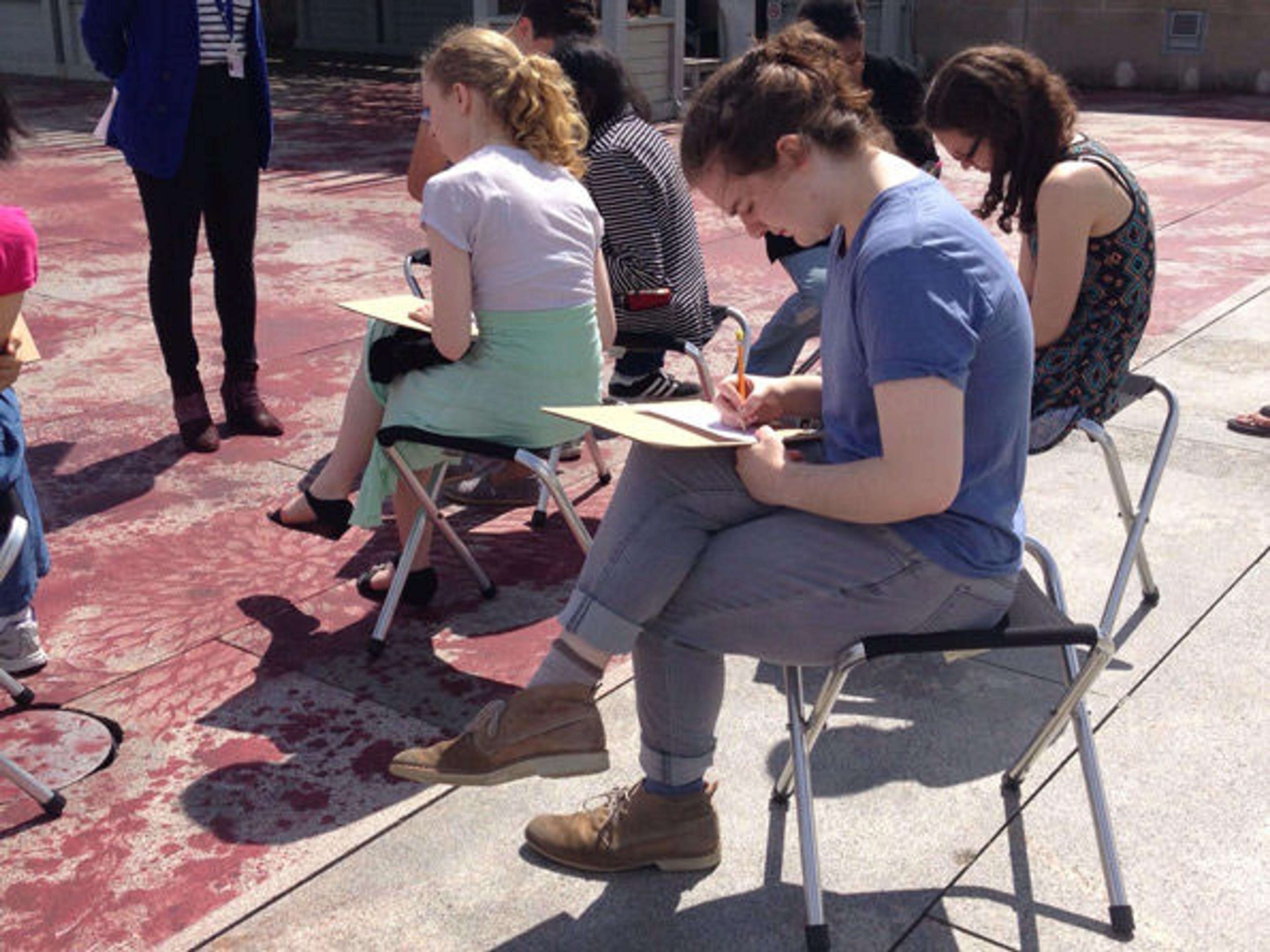
Anna (foreground) makes note of her impressions after viewing The Roof Garden Commission: Imran Qureshi, open through November 3, 2013 (weather permitting).
«Upon first seeing Imran Qureshi's installation on the Museum's Cantor Roof Garden, I was immediately struck by how effectively it subverts one's expectations. Along with the rest of the Teen Advisory Group, I was simply informed that we would be visiting a "rooftop installation," which immediately brought to mind the kind of monolithic modernist sculpture that seems to be increasingly ubiquitous in outdoor art installations these days. Surprisingly, though, we were greeted with something much more subtle and thought-provoking.»
Qureshi's delicately savage staining of the Cantor Roof Garden's floor with both fine petal-esque designs and blunt paint splatters demands the viewer's attention without being confrontational in the way extremely static three-dimensional art (such as sculpture) often does. Because you are personally interacting with the work, and the art is one and the same with the installation's space, it makes you consider the artist's motives more closely and carefully than if it were simply presented to you as an art object.
The installation does not just evoke conceptual attention, either; it is also viscerally satisfying. The Met Cantor Roof is, needless to say, very beautiful, but it can tend to be a little removed, if not cold: the firm, architectural stone lines of the building itself; the just-out-of-reach foliage of Central Park; and the distant, almost-too-idyllic views of the Manhattan skyline that surround the roof all contribute to the feeling that you are somewhere that demands viewership, rather than contemplation. But Qureshi's installation brings a vital, chaotic presence to the rooftop, with its organic, asymmetrical, and thoroughly uncontrived air; it adds something essentially human to the landscape.